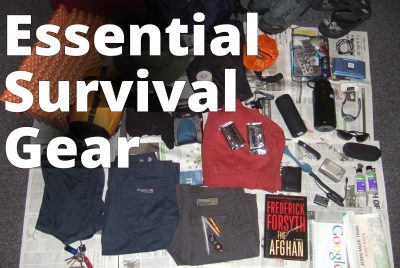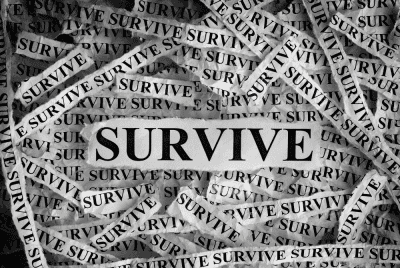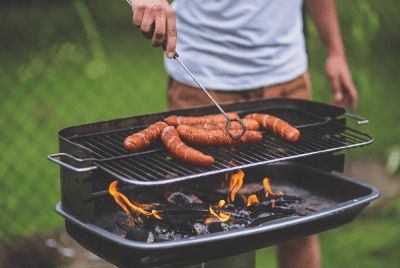The Ultimate Survival Food Storage Guide Unveiled
Mastering the Art of Survival Food Storage: Tips, Techniques, and Essential Strategies
In an unpredictable world, being prepared for unforeseen emergencies is crucial for ensuring the safety and well-being of individuals and families.
One essential aspect of emergency preparedness is Survival Food Storage. This comprehensive guide aims to shed light on the importance of proper food storage in emergency situations and provide valuable insights into maximizing space and shelf life.
What You’ll Learn About Survival Food Storage
By reading this article, you will learn:
– The significance of survival food storage for emergency preparedness.
– Different types of survival food and their nutritional value and longevity.
– Best practices for storing survival food, including monitoring and rotating supplies.

What is Survival Food Storage and Why is it Important?
Survival food storage is the practice of stockpiling essential food items to ensure sustenance during emergencies.
It plays a pivotal role during natural disasters, power outages, or other crises, where access to regular food supplies may become limited or entirely cut off.
By having a well-organized and efficiently stored food supply, individuals can ensure that they have sustenance available even in the most challenging circumstances.
Emphasizing the Role of Proper Food Storage in Emergency Preparedness
Properly stored survival food can be a lifeline during emergencies.
Whether it’s freeze-dried meals with a lengthy shelf life or nutrient-dense snacks packed with essential sustenance, having a well-organized and efficiently stored food supply can make a significant difference in survival situations.

Types of Survival Food
When it comes to survival food storage, there are various types of items that are suitable for long-term storage and consumption.
Freeze-Dried and Dehydrated Meals
Freeze-dried and dehydrated meals are popular choices for survival food storage due to their extended shelf life and lightweight nature.
These meals retain their nutritional value and are easy to prepare, making them ideal for emergency situations.
Canned Goods and Preserved Foods
Canned goods and preserved foods are reliable options for survival food storage. They have a long shelf life and can withstand fluctuating temperatures, making them suitable for storing in diverse environments.
Energy Bars and Nutrient-Dense Snacks
Energy bars and nutrient-dense snacks provide quick bursts of energy and essential nutrients. These items are convenient for on-the-go consumption and can be valuable additions to survival food storage supplies.
Evaluating Nutritional Value and Longevity of Various Survival Food Types
It’s essential to assess the nutritional content and longevity of different survival food types when planning storage. Understanding the nutritional value and shelf life of these items can help in creating a well-rounded and sustainable food supply for emergencies.
| Essential Items | Description |
|---|---|
| Water and Hydration Supplies | Clean water, water purification methods |
| First Aid Kits and Medical Supplies | Bandages, antiseptics, medications, medical tools |
| Tools for Food Preparation and Consumption | Portable stoves, utensils, multi-functional tools |

Essential Items for Survival Food Storage
In addition to food items, several other essential supplies are critical for comprehensive survival food storage.
Water and Hydration Supplies
Alongside food, ensuring access to clean water and hydration supplies is paramount for survival. Stockpiling water and having water purification methods in place are crucial elements of emergency preparedness.
First Aid Kits and Medical Supplies
First aid kits and medical supplies are indispensable for addressing injuries and health concerns during emergencies.
Having these items readily available as part of survival food storage can ensure prompt medical attention when traditional healthcare resources may be unavailable.
Tools for Food Preparation and Consumption in Emergency Situations
Basic tools for food preparation and consumption, such as portable stoves, utensils, and multi-functional tools, are essential for ensuring that stored food items can be safely and efficiently prepared and consumed during emergencies.
Best Practices for Storing Survival Food
The longevity and quality of survival food depend significantly on the storage methods employed.
Proper Storage Techniques for Longevity
Utilizing airtight containers, Mylar bags, and food-grade storage buckets can help maintain the freshness and longevity of survival food items. Additionally, storing items in a cool, dry, and dark environment can further enhance their shelf life.
Importance of Monitoring and Rotating Food Supplies
Regularly monitoring food supplies and implementing a system for rotation to consume and replenish items before their expiration dates is crucial.
This practice ensures that stored food remains safe for consumption and minimizes waste.
For more information on these practices, it’s worth checking out 4Patriots’ effective storage solutions and guidelines.
Considerations for Special Dietary Needs
Addressing special dietary needs is imperative when planning survival food storage.
Addressing Food Allergies, Dietary Restrictions, and Medical Conditions
Individuals with food allergies, specific dietary restrictions, or medical conditions must carefully plan and store food items that align with their requirements. This involves identifying suitable alternatives and ensuring the safety of stored items.
Recommendations for Meeting Diverse Dietary Requirements in Emergency Situations
Providing a variety of food options that cater to diverse dietary needs is essential for comprehensive survival food storage. This can include gluten-free, dairy-free, and vegetarian options to accommodate different preferences and requirements.
For expert advice on this topic, consider exploring Real Simple’s article on maintaining a well-balanced diet during emergencies.
Emergency Food Kits and Meal Plans
Ready-made emergency food kits and meal plans offer convenience and peace of mind in emergency situations.
Benefits and Convenience of Ready-Made Survival Food Options
Emergency food kits are designed to provide essential sustenance during crises. They offer a diverse range of meals and nutrients, catering to various dietary needs and preferences.
Long-Term Storage and Practical Use of Emergency Meal Kits
Many emergency food kits are designed for long-term storage and are packaged for ease of use. They can be stored efficiently and accessed quickly when needed, making them valuable assets for survival food storage.

DIY Survival Food Preparation and Preservation
Creating and preserving homemade survival food items can be a rewarding and sustainable approach to survival food storage.
Creating and Preserving Homemade Survival Food Items
Homemade items such as jerky, dried fruits, and canned goods can be prepared and preserved for long-term storage. This allows individuals to customize their food supplies according to their preferences and dietary needs.
Recipes and Methods for Preparing and Storing DIY Emergency Foods
Exploring recipes and preservation methods for DIY emergency foods can provide valuable insights into sustainable and self-sufficient survival food storage practices.
Sustainable and Eco-Friendly Survival Food Options
Incorporating sustainable and eco-friendly options into survival food storage aligns with responsible and conscious living practices.
Organic and Environmentally Conscious Non-Perishable Items
Opting for organic and environmentally conscious non-perishable food items supports sustainable food production and minimizes the ecological footprint of survival food storage.
Eco-Friendly Packaging Solutions for Long-Term Food Storage
Selecting food items with eco-friendly packaging and utilizing reusable storage solutions contributes to sustainable and environmentally friendly survival food storage practices.
Planning and Budgeting for Survival Food Storage
Effective planning and budgeting are essential for establishing and maintaining survival food storage provisions.
Cost-Effective Strategies for Stockpiling Emergency Food Supplies
Exploring cost-effective strategies such as bulk purchasing, seasonal sales, and DIY preservation techniques can help individuals build comprehensive survival food stores within budget constraints.
Long-Term Financial Considerations for Maintaining and Replenishing Food Stores
Considering the long-term financial implications of maintaining and replenishing survival food stores is crucial for sustained emergency preparedness.
Resources and Suppliers
Identifying reputable suppliers and accessing reliable resources is vital for successful survival food storage.
Reputable Suppliers and Retailers of Survival Food Storage Items
Researching and partnering with reputable suppliers and retailers ensures the quality and reliability of survival food items.
Online Resources for Purchasing Emergency Food Supplies
Exploring online resources and e-commerce platforms for purchasing emergency food supplies provides convenient access to a diverse range of survival food options.
Government and Organizational Resources for Emergency Preparedness and Food Storage
Government agencies and organizations offer valuable guidance and resources for emergency preparedness and sustainable food storage practices.
Testimonials and Case Studies
Real-life stories and testimonials demonstrate the practical significance of survival food storage in sustaining communities during emergencies.
Real-Life Stories and Testimonials on Survival Food Storage
Exploring real-life accounts of how survival food storage has made a difference in emergency situations provides valuable insights and motivation for preparedness.
Impact of Preparedness and Survival Food in Sustaining Communities during Emergencies
Case studies highlighting the impact of preparedness and survival food in sustaining communities during emergencies underscore the critical role of comprehensive food storage practices.
Real-Life Case Study: The Impact of Preparedness and Survival Food in Sustaining Communities during Emergencies
Sarah’s Story: Weathering the Storm
During a severe storm that caused widespread power outages in her area, Sarah and her family found themselves isolated and without access to fresh food for several days. Thanks to their carefully prepared survival food stores, they were able to maintain proper nutrition and stay resilient throughout the crisis. Sarah’s experience highlights the crucial role of preparedness and survival food in sustaining communities during emergencies.
Sarah’s family had stocked up on freeze-dried meals, canned goods, and water supplies as part of their emergency preparedness plan. As the storm raged on, they relied on these supplies to stay nourished and energized. Sarah emphasizes that having a well-thought-out survival food storage plan not only provided physical sustenance but also offered peace of mind during a challenging time.
The resilience and security that Sarah’s family experienced serve as a compelling testament to the value of prioritizing survival food storage. Their story underscores the importance of proactive preparation and the significant impact it can have on individuals and communities facing unexpected emergencies.
Maximizing Space and Shelf Life in Survival Food Storage
Efficiently utilizing space and extending the shelf life of survival food items are essential considerations for sustainable and effective food storage.
Techniques for Efficient Storage and Organization
Implementing space-saving storage solutions and organizational techniques optimizes the use of available space and facilitates easy access to stored items.
Extending the Shelf Life of Survival Food and Meal Kits
Exploring preservation methods and storage conditions that maximize the shelf life of survival food and meal kits ensures the long-term viability of stored provisions.
In conclusion, Survival Food Storage is not just about stockpiling supplies; it’s about ensuring safety, security, and sustenance during unforeseen circumstances. By understanding the significance of emergency food supplies, exploring diverse food options, and adopting sustainable storage practices, individuals can fortify their preparedness for emergencies. It’s essential to prioritize safe food storage practices and embrace the value of emergency meal kits and DIY food preparation. With the knowledge and resources shared in this guide, readers can take proactive steps towards securing their well-being and that of their loved ones in challenging times.
Remember, the key to effective survival food storage is to plan, prepare, and stay informed about the best practices and available resources. Stay safe, stay prepared!




